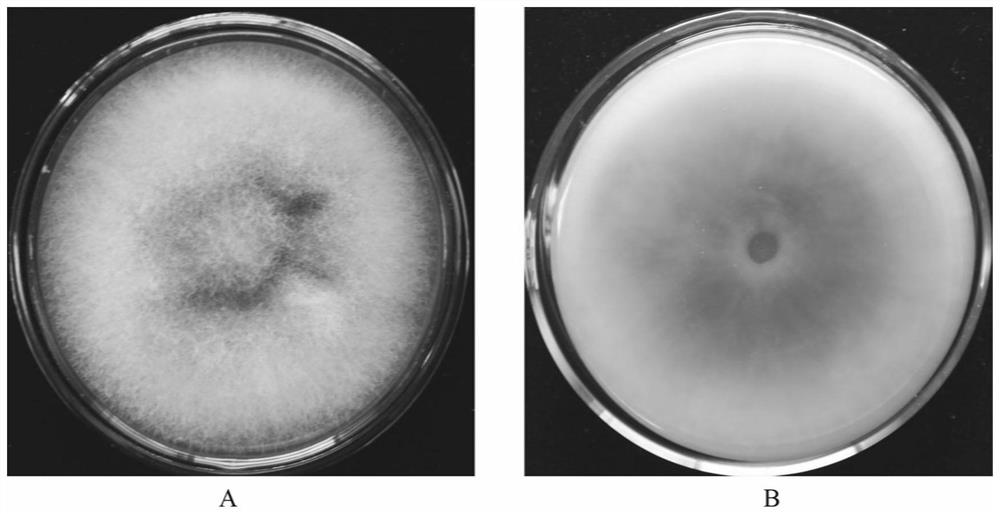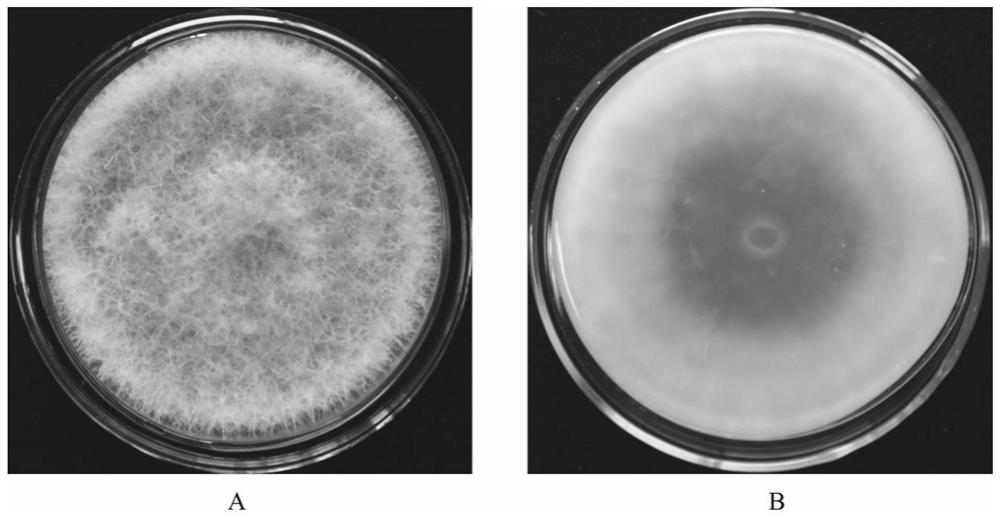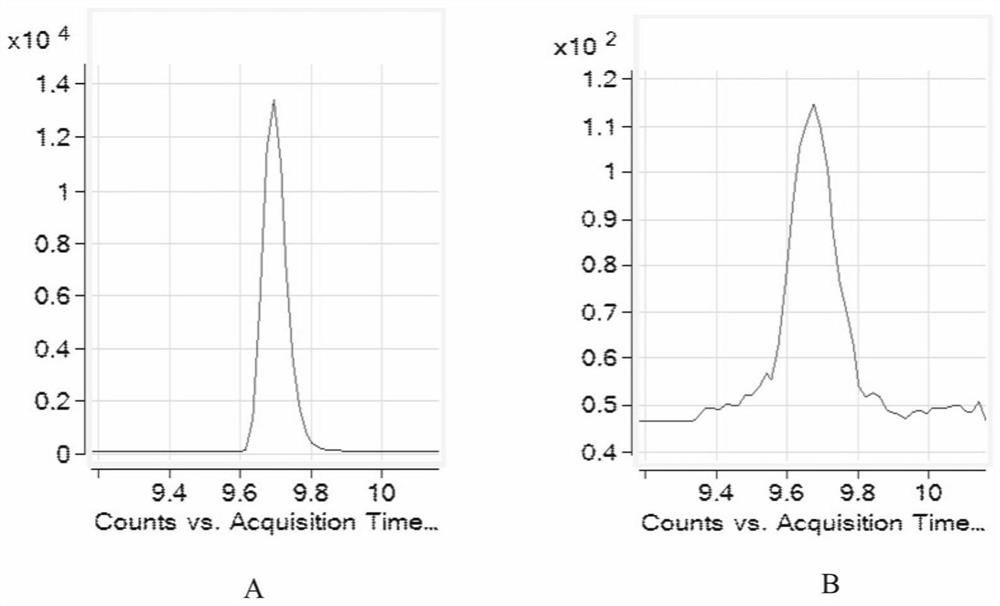Fusarium oxysporum FP26 and application thereof
A technology for layering Fusarium and FP26, applied in the field of microorganisms, to improve the quality and safety of agricultural products, eliminate production and accumulation, and control pollution
- Summary
- Abstract
- Description
- Claims
- Application Information
AI Technical Summary
Problems solved by technology
Method used
Image
Examples
Embodiment 1
[0046] Example 1: Obtainment of Fusarium Strains FP26
[0047] 1. Collection and isolation of strain FP26
[0048] A sample of rice ear rot susceptibility was collected from a paddy field in Panjin, Liaoning, my country. The rice grains with ear rot disease were surface-sterilized with 70% ethanol, rinsed twice with sterile water, and dried with sterilized filter paper. The diseased-healthy junction of the glume was incised, placed on WA medium, and cultured at 28°C. After the colony was formed, the tip mycelium was picked and inoculated on a PDA plate for cultivation. After single spore isolation and purification, the strain FP26 was obtained. 2. Determination of Fumonisin FB1 Content of Strain FP26
[0049] (1) Preparation of samples to be tested
[0050] The strain FP26 was inoculated on PDA medium and cultured at 28°C for 7-8 days. Elute the conidia with sterile water and dilute to obtain a conidia concentration of 10 6 cells / mL of bacterial suspension.
[0051] (2)...
Embodiment 2
[0073] Example 2: Competitive inhibitory effect of Fusarium sp. FP26 without toxigenicity on F. sp. Fp9
[0074] The stratified Fusarium strain Fp9 that produces fumonisins described in the embodiment is recorded in "Sun Lei, Wang Ling, Liu Lianmeng, Hou Yuxuan, Li Qiqin, Huang Shiwen. Rice ear rot bacteria have strong virulence and high-yielding fumonisides. Screening of vegetarian strains. China Rice Science, 2018, 32(6): 610~616.” article. The colony morphology of stratified Fusarium strain Fp9 on PDA is as follows figure 2 shown.
[0075] Fusarium stratum strains FP26 that do not produce fumonisins and Fusarium stratum strains Fp9 that produce fumonisins were respectively inoculated on PDA solid medium and cultured at 28°C for 6 days. The non-toxic Fusarium stratum strain FP26 grows faster on PDA medium and can cover a petri dish with a diameter of 9 cm, with a spore production of 5.7×10 7 pcs / mL. Under the same conditions, the colony diameter of the toxin-producing F...
Embodiment 3
[0082] Example 3: Competitive inhibitory effect of Fusarium stratum strain FP26 on toxigenic Fusarium stratum in different regions
[0083] The Fusarium stratum fusarium that produces fumonisins isolated from different regions, its strain numbers are Fp39 (Hefei, Anhui), Fp153 (Zhengzhou, Henan), Fp387 (Shenyang, Liaoning), Fp417 (Taian, Shandong), Fp665 (Baoshan, Yunnan), respectively. Inoculated on PDA solid medium. After culturing at 28°C for 5 days, the conidia were washed with sterile water and diluted to obtain a conidia concentration of 10. 5 cells / mL of bacterial suspension.
[0084] The Fusarium strain FP26 from the non-toxic layer was inoculated on PDA solid medium. After culturing at 28°C for 7-8 days, the conidia were washed with sterile water and diluted to obtain a conidia concentration of 10 5 cells / mL of bacterial suspension.
[0085] In the treatment group, the bacterial suspensions of the non-toxin-producing Fusarium stratum FP26 and the toxin-producing F...
PUM
 Login to View More
Login to View More Abstract
Description
Claims
Application Information
 Login to View More
Login to View More - R&D
- Intellectual Property
- Life Sciences
- Materials
- Tech Scout
- Unparalleled Data Quality
- Higher Quality Content
- 60% Fewer Hallucinations
Browse by: Latest US Patents, China's latest patents, Technical Efficacy Thesaurus, Application Domain, Technology Topic, Popular Technical Reports.
© 2025 PatSnap. All rights reserved.Legal|Privacy policy|Modern Slavery Act Transparency Statement|Sitemap|About US| Contact US: help@patsnap.com



